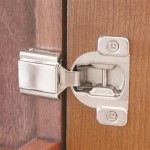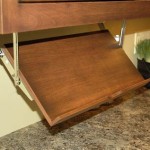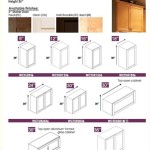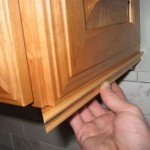Can I Change Kitchen Floor Without Removing Cabinets?
Remodeling a kitchen can be an exciting but daunting task. One of the most common dilemmas homeowners face is whether to remove cabinets during a kitchen floor replacement. While removing cabinets provides easier access to the subfloor, it can also be a time-consuming and costly process. However, there are methods to change your kitchen floor without removing the cabinets, making the project more manageable and budget-friendly.
To determine if you can change your kitchen floor without removing the cabinets, it's important to assess the current flooring and cabinet situation. If the existing flooring is vinyl or laminate and the cabinets are not built-in or have a toe kick, it may be possible to install new flooring without removing them.
If you decide to proceed with replacing the floor without removing the cabinets, careful planning and precise execution are crucial. Here are some key steps to consider:
1. Remove the Baseboards and Trim:
First, remove the baseboards and any trim around the cabinets. This will provide access to the edges of the flooring and allow for the installation of new flooring underneath the cabinets.
2. Cut the Flooring Around the Cabinets:
Using a utility knife or a flooring cutter, carefully cut the existing flooring around the base of the cabinets. Make sure to cut along the edges of the cabinets, leaving a small gap to accommodate the new flooring.
3. Remove the Old Flooring:
Once the flooring is cut, remove the old flooring material, including any underlayment. Clean the subfloor thoroughly to prepare it for the new flooring.
4. Install New Underlayment:
If required for the new flooring type, install a new underlayment to provide cushioning and moisture protection.
5. Install New Flooring:
Starting from the edge of the cabinets, install the new flooring, carefully sliding it underneath the cabinets. Secure the flooring according to the manufacturer's instructions.
6. Install Trim and Baseboards:
Once the flooring is installed, replace the baseboards and trim to conceal the edges of the flooring and provide a finished look.
Tips for Changing Kitchen Floor Without Removing Cabinets:
- Measure accurately to ensure a precise cut around the cabinets.
- Use a sharp utility knife or flooring cutter to minimize chipping or tearing the flooring.
- Protect the cabinets during the removal and installation process with masking tape or plastic sheeting.
- Choose a flooring material that is thin enough to fit underneath the cabinets, such as vinyl, laminate, or engineered hardwood.
- If the cabinets have a toe kick, consider installing flooring that can be slid underneath, such as click-lock or peel-and-stick tiles.
Changing your kitchen floor without removing the cabinets can be a cost-effective and less disruptive alternative to a full kitchen remodel. By following these steps and taking necessary precautions, you can achieve a refreshed and updated kitchen floor while preserving the integrity of your cabinetry.

Can You Replace Kitchen Flooring Without Removing Cabinets
Ideas For Covering Up Tile Floors Without Removing It The Decor Formula

Replacing Kitchen Tiles Without Removing Cabinets

13 Ideas For Upgrading Your Kitchen Floors Extra Space Storage

Do You Install Flooring Before Cabinets Best Practices Reallyfloors America S Est Hardwood

Do You Install Floating Floor Under Cabinets Wood Flooring

Should You Install Tile Floor Before Or After Cabinets

Do You Install Floating Floor Under Cabinets Wood Flooring

Do You Install Floating Floor Under Cabinets Wood Flooring

Our Kitchen Makeover New Hardwood Floors
Related Posts








